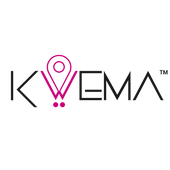Being abused, threatened, assaulted or intimidated while on the job is considered as workplace violence. These behaviors prevail in the healthcare industry, where employees are challenged to take care of themselves while being exposed to visitors, patients or outsiders. A lack of problem understanding and willingness to take action (or taking it the wrong direction) ends up in job dissatisfaction and continually growing statistics of workplace incidents. Therefore, taking a proactive rather than reactive attitude towards preventing workplace violence is essential. This blog explores what can be done from 3 different levels so that this problem is tackled from all perspectives.
Taking action from the Individual Level
Employees come first, they are the ones experiencing misbehaviours or any type of violence or harassment therefore are the ones that can speak in depth about the problem. That's why taking action from an individual level is important.
Nurses, doctors and all the staff should be aware of their environment and should be provided with enough information so that they know how to take action in case of being at risk. This means they should know the facility's areas, emergency exits, public spaces, become familiar with their employer's health and safety policies, etc.
They should have a designated contact person or equipment that allows them to effectively call for help as well as providing their employers with constant feedback and reporting so that improvement is always being done. Meaning that they are involved in the development of procedures, plans and policies.
Employee Level helps understand the problem, this level provides valuable information and insights that can be used to take the right direction towards preventing workplace violence. But all these points remain inexistent unless the next level takes action: employers.

Employer Level, key to effectiveness
One of the main problems is the lack of reporting workplace violence incidents, in order to combat it, the most important thing that managers should emphasize is a firm zero-tolerance to workplace violence. Sponsoring programs that educate staff before any incident occurs while providing programs that support them after an incident occurs is important.
Constantly asking and listening to employees and their needs, worries and motivations is an essential role that if actively considered can result in a safety culture and better organizational structure. After listing and acknowledging your staff problems, management should give continuous help to employees who experience or have experienced workplace violence.
Security and procedures are also important, taking into account your facility's display and common hazards can help you understand weaknesses and improvement areas. Security personnel and technology such as cameras, panic buttons can be part of the solutions provided in this point.
Employer Level helps structure and decide solutions. Managers have the power to take the proper decisions to reduce workplace violence and if this is done with an open mind and listening to employees then we are one step closer to combating the problem more effectively.
The last piece of the puzzle: Legislative Level
Legislation represents the last level we can find when eradicating workplace violence. The Occupational Health and Safety Administration (OSHA) provides voluntary guidelines for those managers seeking a safer place to work at. As of today, no federal laws protect healthcare workers from workplace violence, but some states have passed legislation to change that. Measures such as penalties for nurse assaults, interfering with ambulance serving and creating a disturbance inside facilities have been put on the table.
Legislation Level helps us backup the other levels, this area is key when having a change that can prevail over the years. Even though it may be more dependant on other things and out of employers control, but it's a great idea to always keep an eye on it.

Finally, understanding the importance of all three levels; employees, employer and legislative helps us think of ways to address the problem from different angles. Even if you don't have control over all of them you can be more empathic and create personalized solutions based on your facility, employees, common hazards and location.
